Ancient Jewish Coins: Coins from the Crusaders
(1099 - 1861)
The Crusaders conquered Jerusalem on July 15, 1099. It is reported that 70,000 Arabs were slaughtered after the battle. The Christians remained in power until Saladin retook the kingdom in 1187. The last Crusaders were finally driven from Akko (Acre) in 1270.
The Crusaders issued coins for the Kingdom of Jerusalem, as well as Jaffa, Ascalon and Akko. A Jerusalem silver denier features the Cross of Jerusalem and the Holy Sepulchre; the Latin inscriptions read AMALRICVS REX (Amalric I, 1162-1173) and DE IERVSALEM (Jerusalem). A later denier, issued by Baldwin IV (1173-1185) pictures the Tower of David.
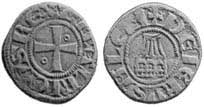 |
|---|
Holy Sepulchre on Crusader Denier (Rogers, Pl. VII, 9)
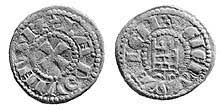 |
|---|
Surprisingly, for nearly 150 years, the Crusader Kingdoms issued gold bezants that imitated the Arab dinars - even including blundered Arabic inscriptions praising Muhammad and his teachings. For instance, a gold coin attributed to Baldwin II (1118-1131) imitates a dinar of Fatimi Khalif Abu’ Ali el-Mansur Amer bi Akham Illah (1101-1129).
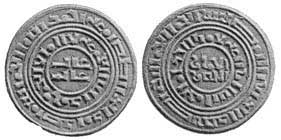 |
|---|
Long after the Kingdom of Jerusalem had fallen, the Crusader Kings of Cyprus retained the title “King of Jerusalem and Cyprus” on their coins. Their silver gros usually depicts the king sitting on a throne, holding a sceptre and orb, with the Cross of Jerusalem on the reverse. The coin pictured was issued by Henry II (1253-1267).
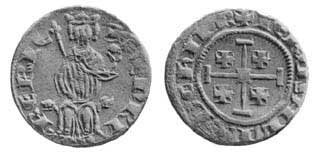 |
|---|
Crusader Gros (Rogers, Pl. VIII, 1)
Finally, the title “King of Jerusalem” was appropriated by the Kings of Sicily, who were of the Cypriot Lusignan dynasty. The title can be found in an abbreviated form (IER) on their coins through 1861, when the unified country of Italy was established. An example is the 1819 5 Lire issued by Victor Emanuel I.
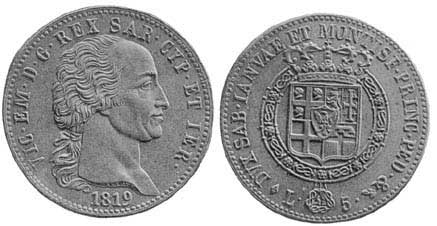 |
|---|
Sources: The Handbook of Biblical Numismatics


